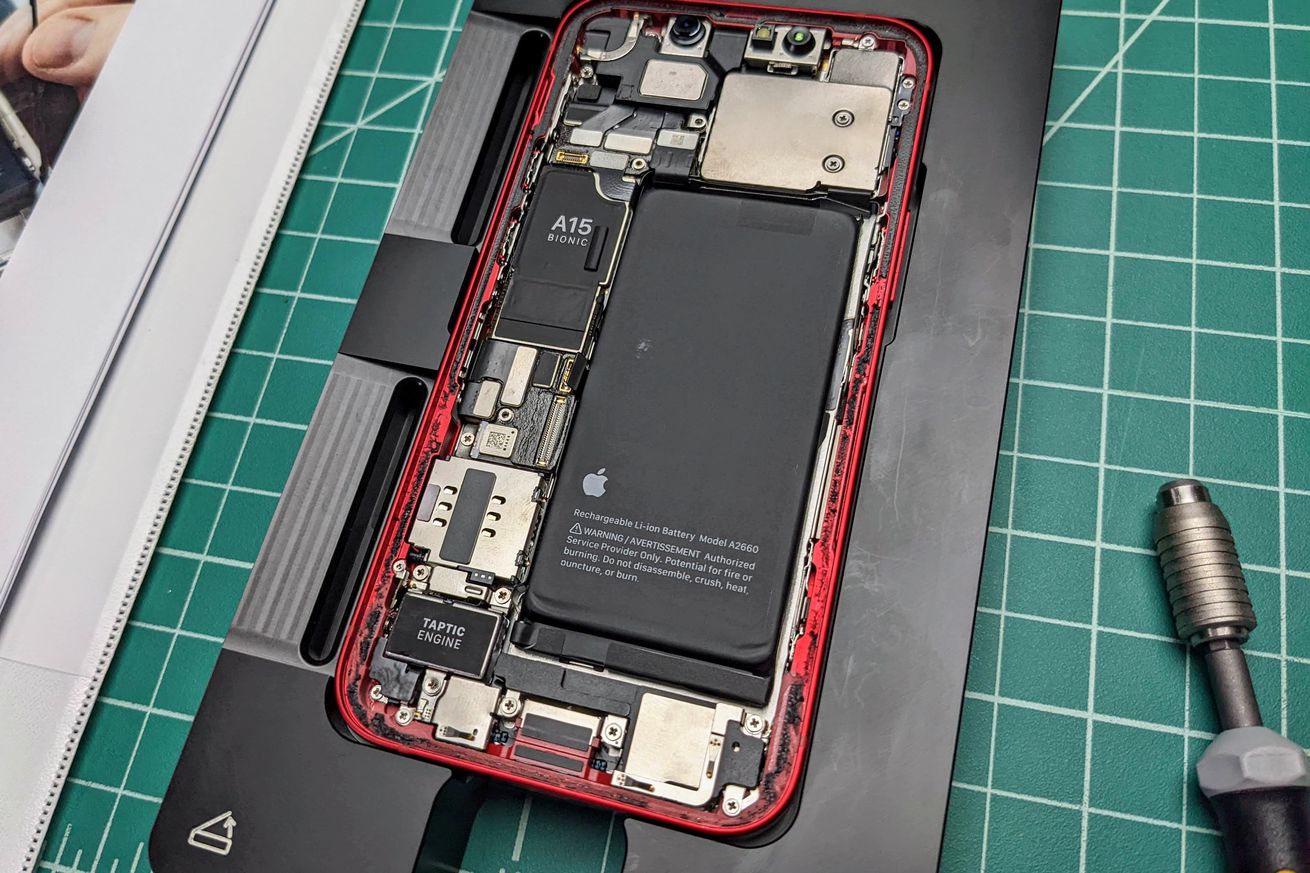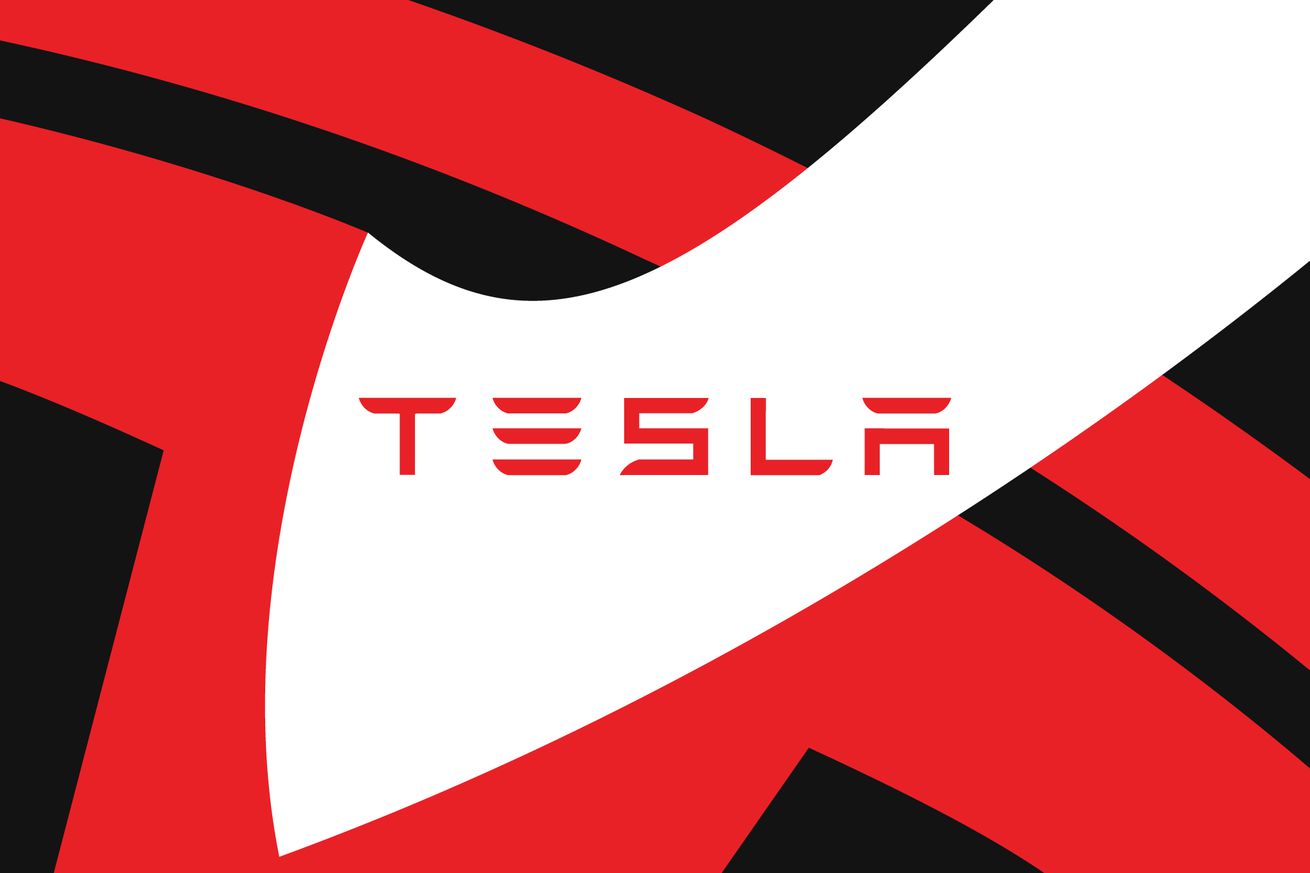
A comprehensive guide to the products that work with Matter — the Amazon, Google, Apple, and Samsung-backed smart home standard — and what you can buy right now.
Matter is a common language for smart home devices designed to simplify everything about the smart home, from purchase to setup and everyday use. Its biggest promise is making smart devices work with each other across platforms and ecosystems, no matter who made them. No more checking for the “works with” HomeKit, Google Home, or Alexa badges — Matter devices work with all of them. It’s also entirely local, so gadgets should respond more quickly. Yes, Matter should make your smart light bulb work just as fast as your non-smart light switch.
All this means you won’t have to pick a platform when adding Matter devices to your home. You can control your smart lighting, smart locks, etc., simultaneously with Siri, Alexa, Google Assistant, and even Bixby, should you want to. You can also easily switch your gadgets between platforms.
This article is a breakdown of the basics around Matter and how it will work in your home. Including which products and platforms will work with the new standard and when. For more on the technology behind Matter, check out this deep dive into the new standard: Matter’s plan to save the smart home.
As new information comes out, we’ll keep this article updated.
What is Matter and when can I use it?
Matter is an interoperability standard designed to solve many of today’s smart home headaches.
Developed and run by the Connectivity Standards Alliance, Matter is supported by a long list of companies. From platform owners like Apple, Google, and Amazon and major manufacturers such as Samsung and LG to smaller accessory-focused players like Nanoleaf, Eve, and Wyze, there’s an unprecedented industry coalition behind Matter. Which is why it’s probably going to work.
Matter isn’t a new protocol; it’s a specification for how devices should talk to each other. It runs over existing protocols: Thread for low-power, low-bandwidth devices such as light bulbs and sensors, and Wi-Fi or ethernet for higher bandwidth devices like streaming media players and cameras (when they arrive).
A key feature of the specification is that all devices can run locally in your home; they do not require an internet connection to work or to work together, although cloud connectivity is an option and allows for out-of-the-home control and integration with cloud services.
Matter officially launched in the fall of 2022; all major smart home platforms now support it but devices are still few and far between. We tested a few Eve devices with beta Matter support in December 2022, to mixed results.
Early 2023 is when you can realistically expect to use Matter in your home.
What do I need to use Matter?
/cdn.vox-cdn.com/uploads/chorus_asset/file/23907582/Thread_Matter.jpg) Image: Thread Group
Image: Thread Group
A Matter controller
To add and control Matter devices, you need a Matter controller. Unlike proprietary hubs and bridges from companies such as Philips Hue and Lutron Caseta, Matter controllers are not brand-specific. As long as it’s a Matter controller, it can control a Matter device — no matter who made it. (It doesn’t get old)
Matter controllers are built into the latest versions of Android and Apple’s operating systems, and all the flagship smart speakers and devices are now Matter controllers: including the Apple HomePod Mini, Apple TV 4K, Amazon Echo and Google Nest Hub speakers and displays, and Samsung SmartThings hubs.
Many different types of devices can be Matter controllers: smart speakers, voice assistants, apps, or hubs with apps. Their primary role is to manage communications, control, automations, and remote access (when enabled). Because of this, your Matter controller is ideally a device that is always in your home, always powered, and has a direct connection to your home network.
It’s worth noting that Matter controllers aren’t necessarily Matter devices. You probably won’t be able to control an Amazon Echo Show with your Google Nest Hub Max or a Samsung Family Hub fridge with your Apple TV.
A Thread border router
Matter works over Wi-Fi, ethernet, and Thread. Matter controllers take care of Wi-Fi and ethernet devices, but if you have Thread devices, you need a Thread border router to talk to the Matter controller. Helpfully, some Matter controllers are also Thread border routers.
/cdn.vox-cdn.com/uploads/chorus_asset/file/23619948/VRG_ILLO_5281_ThreadGroup_Matter.jpg) Illustration by Grayson Blackmon / The Verge
Illustration by Grayson Blackmon / The Verge
Thread is a low-power, low-latency wireless protocol that creates a self-healing mesh network. This means the more devices you have on it, the better the range and reliability will be. Similar to the Zigbee protocol, Thread works on the same 2.4GHz spectrum and is designed for the same low-power devices: sensors, light bulbs, plugs, and shades.
But Thread is IPv6 based, which means it can talk to the internet directly, whereas Zigbee devices require a hub, and often a proprietary one. Thread also has lower latency and is an open protocol — Zigbee has become hopelessly fragmented. Like Matter controllers, Thread border routers are platform agnostic, so any Thread device can connect to them.
Thread border routers don’t need a hardwired internet connection. They just need continuous power and Wi-Fi. This means that, unlike traditional bridges and hubs, they can be almost anything from a smart light or smart speaker to a fridge, television, or thermostat. In the long run, it’s likely that your next Wi-Fi router will contain a Thread border router, so you won’t have to worry about this at all.
Today, existing devices from Amazon, Apple, Eero, Google, and Samsung have Thread border routers that support Matter.
Which smart home platforms support Matter?
The four big platforms — Amazon Alexa, Google Home, Apple Home, and Samsung SmartThings — all support Matter. This means you can use any of their apps, smart speakers, hubs, and smart voice assistants as Matter controllers to manage your connected devices.
Because of a Matter feature called Multi-Admin — which lets you control the same Matter devices with multiple platforms — you don’t have to use one of the big four to control your devices. Several companies have already said their apps will become Matter controllers, including the TP-Link Tapo app, the Aqara app, and the Wiser app. And there will likely be more options soon.
You do need to use an app. Matter doesn’t have its own app. It isn’t a platform; it’s just the language the devices speak to each other. You’ll need to pick an app to manage that language and tell your smart thermostat to turn down and your lights to turn off when you lock your door. With Matter, these types of automations will run across devices from different companies that weren’t previously compatible.
So, yes, you will be able to control the new Nest Thermostat with Apple’s Siri or an Eve smart plug with Amazon Alexa. Plus, you can use the Apple Home app on your iPhone to turn on the living room light, and your partner can use the Google Home app on their Android phone to turn on the same lights.
Here is a rundown of what each of the smart home platforms has said it is doing to support Matter:
/cdn.vox-cdn.com/uploads/chorus_asset/file/24139110/226372_Echo_Dot_Clock_5th_Gen_J_0007.jpg) Photo by Jennifer Pattison Tuohy / The Verge
Photo by Jennifer Pattison Tuohy / The Verge
Amazon Alexa Matter support
A total of 17 Echo devices — including all of the current lineup — became Matter compatible in December 2022. So far, they only support Matter-over-Wi-Fi — and just three out of the first Matter device types: smart plugs, smart bulbs, and smart switches.
The Alexa app supports Matter on Android, and Amazon has said it will update the iOS Alexa app in 2023. Its flagship fourth-generation Echo smart speaker will also become a Thread border router “early next year.” Amazon’s Echo Studio, Echo Show 10, and Echo Plus speakers also technically have the capability to be border routers, but Amazon has not announced if those will be updated.
Amazon’s mesh Wi-Fi network company, Eero, has committed to supporting Matter, too. Most of its existing routers can already act as Thread border routers and will be upgraded to support Matter early next year. (See the full list below.)
Google Nest and Google Home Matter support
As of December 15, 2022, all Google’s Nest smart speakers and displays can act as Matter controllers. Newer products with Thread built in — such as the Nest Wi-Fi, Nest Wi-Fi Pro, Nest Hub Max, and second-gen Nest Hub — are also Thread border routers. Android devices and the Google Home app are also now Matter-compatible and can add Matter devices to Google Home smart homes.
/cdn.vox-cdn.com/uploads/chorus_asset/file/24209128/DSCF0260_2.jpeg) Photo by Chris Welch / The Verge
Photo by Chris Welch / The Verge
Apple Home Matter support
As of iOS 16.1, Apple’s HomePod, HomePod Mini, and 2021 and 2022 Apple TV 4K models are already Matter controllers. The HomePod Mini, Apple TV 4K Wi-Fi + Ethernet (2022), and Apple TV 4K (2021) are also Thread border routers. All Apple’s operating systems — watchOS, iPadOS, macOS, tvOS, and HomePod software — are now Matter certified, too.
The Apple Home app and Siri voice assistant on Apple devices support Matter. The company has said all existing HomeKit APIs will automatically work with Matter-enabled accessories.
“We believe all smart home accessories should work together to provide the most choice and interoperability for customers without compromising security and privacy,” Apple spokesperson Jacqueline Roy told me. “This is why we helped create and contribute to the new Matter standard so that all smart home accessories will have the same level of security, privacy, and ease of use that Apple customers enjoy today with HomeKit accessories.”
Samsung SmartThings Matter support
Samsung’s v2 and v3 SmartThings hubs have been updated to work as Matter controllers, and the v3 hub and Aeotec SmartThings hub are now also Thread border routers.
Samsung says its Galaxy smartphones and tablets, newer smart TVs and monitors, and its Family Hub refrigerators will get updated to support Matter-over-Wi-Fi.
The $35 SmartThings Hub Dongle will get Matter and Thread early next year. It already supports Zigbee and can be plugged into a smart TV or fridge to add full support for SmartThings-compatible Zigbee and Thread devices.
SmartThings hubs will not bridge existing devices into Matter. So your connected Zigbee and Z-Wave devices won’t show up in other Matter ecosystems — only in SmartThings.
Will I need to replace my existing smart devices?
Matter is designed to include devices already in our homes, and while some existing Thread devices that companies said might get upgraded to Matter now won’t, there are potential upgrade paths for many gadgets.
- Zigbee devices can be bridged to Matter through their existing hub (both Philips Hue and Aqara have pledged to do this).
- Some Wi-Fi devices can get Matter compatibility with an over-the-air firmware update.
- Theoretically, some Zigbee devices could get device-level Matter-over-Thread support, though no such updates have been announced.
/cdn.vox-cdn.com/uploads/chorus_asset/file/24209143/verge_DSC_4403_2040pxl.jpeg)
Current devices that can’t be upgraded to Matter will continue to work with the platforms they already work with. They will coexist with Matter devices on those platforms and can be used alongside them in routines and automations.
Bluetooth-only devices that don’t rely on bridges, such as Eve’s earlier line of security and sensor products or GE Cync’s Bluetooth mesh bulbs, can’t be updated to work with Matter since Matter doesn’t support Bluetooth except for device setup. Eve has already rolled out new Thread-enabled versions of almost its entire range of Bluetooth products.
Because the Matter specification was delayed several times and only finalized in late 2022, several manufacturers — including Nanoleaf, Belkin WeMo, and Schlage — shipped Thread products that they expected to update with Matter support, only to find that the hardware couldn’t handle the software requirements of the final version.
Instead, all those companies have announced plans to launch new Matter-enabled products next year. It’s a good idea not to buy any Thread products going forward until they have Matter support.
What about Z-Wave and Zigbee?
To date, we haven’t heard of any Z-Wave hubs that will expose their Z-Wave devices to Matter. Jaeyeon Jung, executive vice president and Head of SmartThings at Samsung Electronics, told me there is a significant technical complexity to doing this. “Looking at each legacy device and coming up with a way to convert each to Matter would be a huge process,” she said. “We still have to look at all the technical details to see if that would be possible.”
The Z-Wave Alliance is promoting solutions to bridge existing Z-Wave devices into Matter. Chipmaker Silicon Labs has developed both software and hardware solutions to enable this. But none of these have yet made their way into products you can buy.
For now, if you have Z-Wave or Zigbee devices, stick with whatever hub you are already using or switch to SmartThings or Home Assistant if you want Matter and your current platform won’t support it.
Will I still need hubs and bridges to run my smart home?
Yes. If you have devices that work through a bridge today, you will need to keep your bridges and hubs to continue using these devices. This applies to things like Philips Hue lighting products, Aqara sensors, Z-Wave and Zigbee devices going through a hub like Samsung SmartThings or Hubitat, or Ikea smart home devices on its older Trådfri gateway.
In an ideal world, you should not have to buy any more bridges or hubs. “Matter is going to be cheaper for device makers. It’s going to be cheaper for a lighting company, for example, to make an IP-based bulb [than continue to build bridges],” says Chris LaPré, head of technology for the CSA. “In the long run, Matter will take over, and eventually, you’ll just get rid of all the bridges.”
However, Signify — which owns Philips Hue — has said it will continue to use a bridge with its Zigbee-based lighting products and has no plans to make any of its other products directly Matter enabled.
/cdn.vox-cdn.com/uploads/chorus_asset/file/24164788/Matter_Logo.jpg) Image: Connectivity Standards Alliance
Image: Connectivity Standards Alliance
Which products will work with Matter?
Most companies that have announced Matter devices say they will start shipping in Q1 of 2023.
New products that are compatible with Matter should have the Matter logo on them (it looks a bit like a stick person wearing bikini bottoms). Many manufacturers are adding Matter support to existing devices with over-the-air firmware updates. (More on this in a bit.)
The first device types supported in Matter are:
- Light bulbs and light switches
- Plugs and outlets
- Door locks
- Thermostats and other HVAC controllers (mini-splits, etc.)
- Blinds and shades
- Sensors (motion, contact)
- Bridges
- Televisions and streaming video players
The following device categories will be included in a future update to Matter, according to the CSA:
- Wireless Access Points (routers / modems)
- Garage door and gate controller sensors
- Home security cameras
- Home appliances
- Robot vacuums
- Environmental quality sensors and controls (such as indoor air quality monitors and air purifiers)
- Smoke and CO detectors
- Ambient motion and presence sensing
- Energy management
/cdn.vox-cdn.com/uploads/chorus_asset/file/22982938/jtuohy_211102_4860_0030.jpg) Photo by Jennifer Tuohy / The Verge
Photo by Jennifer Tuohy / The Verge
Devices that work with Matter now
Matter controllers with Thread border routers
- Apple HomePod Mini
- Apple TV 4K Wi-Fi + Ethernet (2022)
- Apple TV 4K (2021)
- Aeotec SmartThings Hub
- Samsung SmartThings Hub v3
- Google Nest Hub (second-gen)
- Google Nest Hub Max
- Google Nest WiFi Pro
- Google Nest WiFi Router / Point
Matter controllers
- Apple HomePod
- Apple TV 4K Wi-Fi (2022)
- Apple Home app on devices running iOS 16.1 or newer
- Amazon Alexa app (Android)
- Echo smart speaker (third-gen and newer)
- Echo Dot (third-gen and newer)
- Echo Dot with Clock (third-gen and newer)
- Echo Studio
- Echo Show 8 (second-gen and newer)
- Echo Show 10 (third-gen)
- Echo Show 5 (second-gen and newer)
- Echo Input
- Echo Flex
- Echo Plus (v2)
- Google Nest Audio
- Google Nest Mini
- Nest Hub (first-gen)
- Google Home (original smart speaker)
- Google Home Mini
- Nabu Casa Home Assistant Yellow
- Home Assistant
- Samsung SmartThings app (Android)
- Samsung SmartThings Hub v2
Lighting and plugs
- Eve Energy smart plug
- All Wiz lighting products manufactured since Q2 2021 now have Matter certification
- Meross Matter Smart Wi-Fi Plug Mini
Sensors
- Eve Motion motion sensor (December 12th / Thread)
- Eve Door & Window contact sensor (December 12th / Thread)
/cdn.vox-cdn.com/uploads/chorus_asset/file/23921610/jtuohy_220801_226099_0004.jpg) Photo by Jennifer Pattison Tuohy / The Verge
Photo by Jennifer Pattison Tuohy / The Verge
/cdn.vox-cdn.com/uploads/chorus_asset/file/4124096/D2-Heart-of-your-Hue-system-square-2.0.jpg) Image: Philips Hue
Image: Philips Hue
Devices that should work with Matter in Q1 of 2023
Matter controllers
- Aqara app
- Aqara Hub M2 (delayed)— will bridge over 40 existing Aqara devices
- Wiser app
- Tuya Smart life app*
- Alexa app (iOS)
*Tuya Smart is an IoT development platform service provider that supports over 446,000 developers with schematics for over 1,100 smart home products from robot vacuums to smart lights. It already has Matter certification for a number of light bulbs and smart plugs. Brands that use Tuya include Teckin, Gosund, Nooie, Lidl, and Iotty
Apps that will support Matter
- Eve app (iOS and Android)
- Samsung SmartThings app (iOS)
Bridges
- Philips Hue Bridge — all connected Hue lighting products will bridge into Matter (except Hue Sync Box and Tap Dial Switch)
- Schneider Electric Wiser Gateway — will bridge over 200 existing Wiser Zigbee devices
Wi-Fi routers
- Eero 5
- Eero 6 Plus
- Eero Beacon
- Eero PoE Gateway
- Eero PoE 6
- Eero Pro 6
- Eero Pro 6E
- Eero Pro
- Comcast xFi Gateway
Lighting and plugs
New products
- TP-Link smart bulbs, switches, plugs, and hubs — 10 new products from these categories
- Nanoleaf Matter Essentials A19 light bulb (coming 2023 / Thread)
- Nanoleaf Matter Essentials GU10 light bulb (coming 2023 / Thread)
- Nanoleaf Matter Essentials Light Strip (coming 2023 / Thread)
- Schneider Electric Smart Plug
- Yeelight Smart Light
Sensors
New products
- Aqara Door and Window Sensor P2 (coming 2023 / Thread)
- Aqara Motion and Light Sensor P2 (coming 2023 / Thread)
/cdn.vox-cdn.com/uploads/chorus_asset/file/24202196/226408_Google_Nest_Wifi_Pro_JTuohy_0001.jpg) Photo by Jennifer Pattison Tuohy / The Verge
Photo by Jennifer Pattison Tuohy / The Verge
Devices that should work with Matter sometime in 2023
Matter controllers with Thread border routers
New products
- Aqara Hub M3 (coming 2023)
- Homey Pro hub (coming 2023)
- HOOBS Pro
Matter controllers
- Brilliant smart home panel
- Samsung Galaxy devices
- Samsung Family Hub fridge
- Samsung Smart Monitors
- Samsung smart TVs
- LG smart TVs (webOS 22)
Apps that will support Matter
- Google Home app (Android/iOS)
- TP-Link Tapo app
New products
Bridges
- Aqara Hub M1S / M1S Gen 2
- Aqara Hub E1
- Aqara Camera Hub G3
- Aqara Camera Hub G2H Pro
Lighting and plugs
- Eve Flare Lamp (Thread, coming soon)
- Eve Light Switch (Thread)
New products
- Connected by Wiz products (i.e., Philips Smart lighting)
Sensors
- Eve Room (Thread)
- Eve Weather (Thread)
- Eve Water Guard (Thread)
New products
- Netatmo Smart Security Sensor (Thread)
Appliances
Others
- Eve MotionBlinds (Thread)
- Eve Shutter Switch (Thread, coming soon)
- Eve Aqua (Thread)
/cdn.vox-cdn.com/uploads/chorus_asset/file/24037387/226281_YALE_ASSURE_SMART_LOCK_2_jtuohy_0006.jpg) Photo by Jennifer Pattison Tuohy / The Verge
Photo by Jennifer Pattison Tuohy / The Verge
Devices that should work with Matter at some point
Controllers
Bridges
Door locks
- Level Lock (all models) (Thread)
- Yale Assure Lock 2 (Thread module)
New products
- Future August smart locks
- Future Schlage smart locks
Thermostats
- Google Nest Thermostat
- Eve Thermo (Thread)
Lighting and plugs
New products
- Yeelight Pro
- Yeelight Cube
- Cync A19 smart bulb
- Cync light strip
- Sengled Wi-Fi A19 bulb
- Belkin Wemo Smart Plug (Thread)
- Belkin Wemo Smart Light Switch (Thread)
- Belkin Wemo Smart Dimmer (Thread)
Other
How easy will it be to add a Matter device to your smart home?
Adding a Matter device to your smart home should be very simple and similar no matter which device you’re adding or which platform you’re adding it to. Although in early testing, I ran into some hiccups. But once all the software updates have rolled out things should be smoother. Essentially, it’s much like adding a device to Apple’s Home platform today.
Matter uses numeric and QR setup codes and Bluetooth Low Energy to add a device to your network. Open the device maker’s app or your smart home platform app, scan the QR code or manually enter the numeric code written on the device, and follow the prompts.
NFC pairing will be an option for some devices, letting you tap the device with your phone. And some platforms will support auto-detection, so your phone will just see there is a device ready to be paired and prompt you to add it.
Once your device is set up in one platform, you can add it to other apps and platforms using Matter’s multi-admin feature. The process to share is similar to onboarding, only you don’t have to have the device in hand, as the app creates a pairing code for you.
Is Matter private and secure?
Smart home adoption has been slow as people are concerned about their privacy and security. The CSA says keeping devices secure is a core tenet of Matter.
“We are secure by design, we take a zero-trust approach, we use specific industry-standard encryption technology, and every device gets authenticated before it joins the network,” says Michelle Mindala-Freeman, head of marketing at CSA. “Every message is secured on the network, and Matter supports secure over-the-air updates.”
In terms of your home’s data, that relationship remains between you and the individual manufacturers, says Mindala-Freeman. However, Matter’s privacy principles outline data privacy protections, including minimizing how much data is shared in any Matter interaction and defining the purpose of data sharing when requested. As a bonus, because Matter has trust built into the system, you won’t have to continually input your passwords to connect ecosystems, explains the CSA’s LaPré.
The significant advantage of Matter devices — direct IP control that lets them speak straight to the internet — is also seen as a possible security concern. The CSA says Matter’s security approach delivers security that is “strong, agile (to address the evolution of things like encryption types over time), and proactive, with a community of members who do threat modeling and mitigation,” says Tobin Richardson, president and CEO of the CSA.
The approach is one of resilient security while still getting the benefits of an IP-connected world “rather than security by obscurity,” he says. Until devices are out in the wild, confirming this approach’s proficiency is hard, but the intent checks all the right boxes.
Which smart home device categories won’t work with Matter?
/cdn.vox-cdn.com/uploads/chorus_asset/file/22881764/20210621_us_lifestyle_insitu_alarmpro_keypad_credenza_rgb_16x9.jpg) Image: Ring
Image: Ring
Smart security cameras don’t currently work with Matter, but the CSA has said they will be part of a future update. How that will work in practice is unknown. Apple contributed the framework of its HomeKit smart home platform to Matter, so it’s possible that its HomeKit Secure Video may also be part of that contribution. We’ll have to wait and see.
Smart sensors are part of Matter, but home security systems are not — yet. Many smart homes run with an alarm system as the main hub, so the lack of integration here could be a deal-breaker for some.
Mitch Klein, executive director of the Z-Wave Alliance — a technology used widely in home alarm systems for door / window sensors, motion sensors, and other devices — explains that there will be significant challenges to porting that technology to Matter. “Securing UL approval for security devices is exceptionally difficult, and Matter has numerous challenges here,” he says. “UL is a benchmark and often an insurance requirement. All professionally-installed security systems insist on UL approval.”
Speaking of cameras and alarm systems, one of the biggest smart home companies in both these spaces — Ring — hasn’t offered any indication it will support Matter. I asked how / if Ring Alarm might integrate into Matter last year, and a spokesperson stated: “Ring Alarm Pro does not support Matter over Thread.”
Whole home audio streaming (the tech from speaker companies like Sonos and Bose) is not currently supported, and we don’t know how Alexa, Apple, and Google’s current multiroom music streaming solutions will integrate with Matter. There is a Matter casting feature in the specification, but so far, there haven’t been any implementations of it announced.
Update January 3rd, 2023, 5:05PMET: Updated to reflect Matter updates and rollouts (and some delays) through the end of 2022.
Update November 16th, 2022, 3:45PM ET: This article was originally published in October 2021. Following the launch of Matter this month and the beginning of the availability of products. We have revised much of it to keep it current.

/cdn.vox-cdn.com/uploads/chorus_asset/file/24321636/Sprig_aae37408_rgb.jpg) Image: Kohler
Image: Kohler
/cdn.vox-cdn.com/uploads/chorus_asset/file/24321654/HaiShowerInfusions.jpg) Image: Hai
Image: Hai

/cdn.vox-cdn.com/uploads/chorus_asset/file/24333023/P5Ci3Fu4F9_20230103092457.jpg) Image: Samsung Display
Image: Samsung Display



/cdn.vox-cdn.com/uploads/chorus_asset/file/23985548/Odyssey_OLED_PR_dl2.jpg) Image Credit: Samsung
Image Credit: Samsung











/cdn.vox-cdn.com/uploads/chorus_asset/file/24324381/IMG_6176.jpeg) Image: Umar Shakir / The Verge
Image: Umar Shakir / The Verge
/cdn.vox-cdn.com/uploads/chorus_asset/file/24323282/IMG_6158.jpeg) Image: Umar Shakir / The Verge
Image: Umar Shakir / The Verge

/cdn.vox-cdn.com/uploads/chorus_asset/file/24321094/a11919a860d50830d1787febb276c657_original.gif) Image: Kevin Bates | Arduboy
Image: Kevin Bates | Arduboy

/cdn.vox-cdn.com/uploads/chorus_asset/file/24320089/Screenshot_2022_12_27_at_13.35.19.png) Image: Chaos Computer Club
Image: Chaos Computer Club
